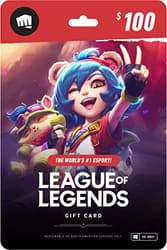
League of Legends Ranks: Everything You Need to Know
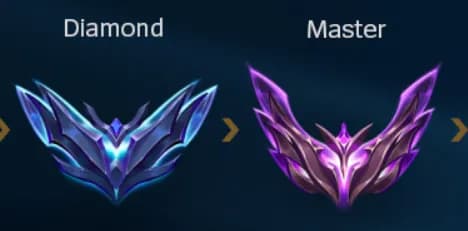
The League of Legends ranks system is a core part of the game’s competition. It helps players track their progress, match with similarly skilled opponents, and climb through structured tiers and divisions.
The LoL Ranked System is Riot’s way of making sure we all suffer equally. It’s where casuals turn tryhard and where your mental health goes to get tested. But even if it tilts you, it’s the best way to measure how good (or bad) you are.
LoL Ranking Explained
The League of Legends ranking system is built around two key values: LP (League Points) and MMR (Matchmaking Rating). LP determines your visible rank, while MMR is an invisible score used to decide how much LP you win or lose. These two elements work in tandem to place you in matches with players of similar skill, ensuring a balanced and competitive environment.
Players gain or lose LP based on match outcomes, but the exact number depends heavily on your current MMR compared to your visible rank. For example, if your MMR is significantly higher than your LP rank, you will gain more LP with each win. Conversely, if your MMR is lower, expect to lose more LP per defeat. This dynamic creates the feedback loop that makes up the core of the League of Legends ranking system.
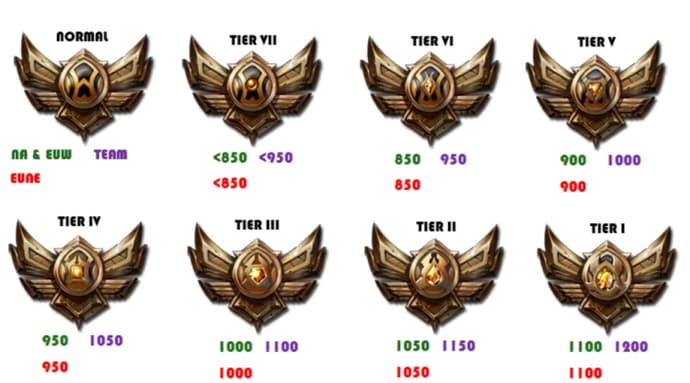
League of Legends Tiers vs. Divisions
League of Legends ranks are divided into nine tiers, with most of them split into four divisions. Each tier represents a skill level, while divisions offer finer granularity within each tier. The ranking structure ensures that players are matched as fairly as possible based on their performance over time.
| Tier | Divisions |
| Iron to Diamond | Four (IV to I) |
| Master | No divisions |
| Grandmaster | No divisions |
| Challenger | No divisions |
This breakdown shows how the system escalates from casual to elite-level gameplay, with the highest ranks being extremely competitive and reset regularly.
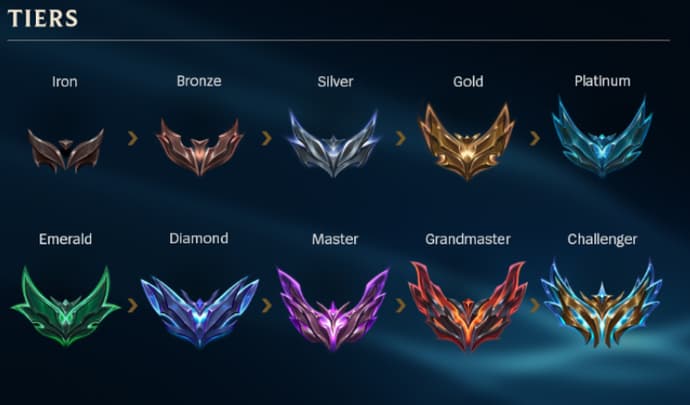
League of Legends Tiers
The tiers in League of Legends represent broad skill categories:
- Iron: New or low-skill players
- Bronze: Below average
- Silver: Average
- Gold: Slightly above average
- Platinum: Skilled players
- Diamond: High-level competitive players
- Master, Grandmaster, Challenger: Top-tier competitive play
Each tier reflects a player's mastery and game knowledge. The higher the tier, the more mechanically skilled and game-aware players tend to be. The top three tiers are especially volatile and subject to resets and decay.
League of Legends Divisions
Each tier, from Iron to Diamond, contains four divisions, labeled IV (lowest) to I (highest). Players need to earn 100 LP to climb from one division to the next. Once a player reaches Division I and earns 100 LP again, they enter a promotion series to move up to the next tier.
The divisions allow players to progress incrementally, making advancement feel rewarding without being too abrupt. This also creates a clear pathway for improvement and helps maintain match fairness.
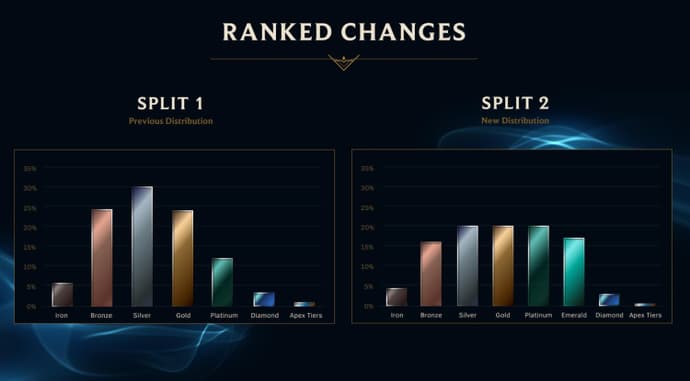
LoL's Ranking Distribution
Understanding where most players fall in the League of Legends ranks gives insight into how competitive the ladder is. According to Riot’s data, the vast majority of players are placed between Silver and Gold tiers. Only a small percentage reach Diamond or above.
Here's a simplified breakdown:
| Tier | Approximate Player Percentage |
| Iron | 4% |
| Bronze | 17% |
| Silver | 22% |
| Gold | 22% |
| Platinum | 17% |
| Diamond | 9% |
| Master+ | Less than 2% |
This means even reaching Platinum puts you in the top third of players — an impressive feat.
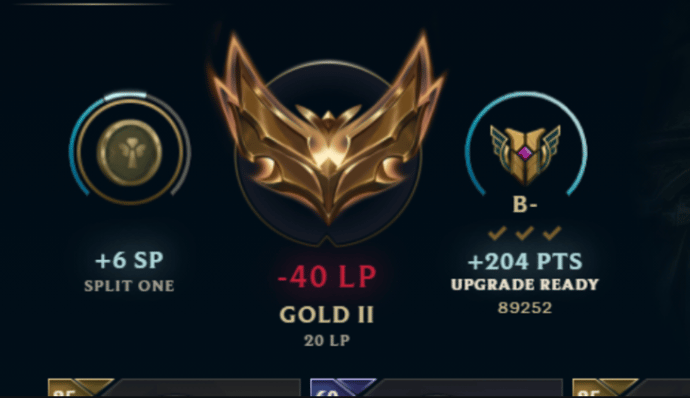
How LoL League Points (LP) Works
League Points (LP) are the visible score that tracks your progress through the divisions and tiers. Every time you win a ranked game, you gain LP; when you lose, you lose LP. The exact amount depends on your hidden MMR.
- Win with high MMR → Gain 20–30 LP
- Lose with low MMR → Lose 20–30 LP
- Promotion: 100 LP → Move up division (or tier)
- Demotion: 0 LP + loss → Move down division
If your MMR is consistently higher than your LP, you will experience smoother climbs. If not, climbing will feel slow, and losses will be punishing.

Matchmaking Rank (MMR) Explained
Matchmaking Rating (MMR) is a hidden value that determines the actual skill level of each player. Riot uses it to pair you with and against players of similar performance. MMR is adjusted after every game, based on wins, losses, and the strength of your opponents.
Unlike LP, you can’t see your MMR directly. However, you can infer it by noticing how much LP you gain or lose. A high win streak often indicates that your MMR is rising and you're on the verge of faster LP gains and tougher matches.
In higher tiers, MMR affects not only your LP but also who you get matched with. And if you're Diamond or above and go inactive, decay kicks in:
| Rank | Inactivity Period | LP Loss per Day | Banking Max |
| Diamond | 28 days | -50 LP/day | 28 days |
| Master+ | 14 days | -75 LP/day | 14 days |
You can earn extra “banked” days by playing matches — one match adds one day, up to the maximum.

Solo vs. Duo vs. Flex Ranks Difference
League of Legends offers three ranked queues: Solo/Duo, Flex, and Ranked Arena. Most players focus on Solo/Duo for climbing, as it's considered the most accurate reflection of individual skill.
| Solo/Duo | 1 or 2 players | Iron–Diamond: Duo within 2 divisions |
| Master+: Solo only | ||
| Flex | 1, 2, 3, or 5 players | No rank restrictions below Master |
| Can’t queue as 4 |
Flex is more relaxed and social, allowing friends of any rank to play together. However, if you're serious about climbing the League of Legends ranking system, Solo/Duo is the preferred path.
Whether you're stuck in Bronze or pushing for Challenger, understanding the League of Legends ranks system is crucial for improvement. Knowing how LP, MMR, tiers, and queues work gives you the tools to climb more efficiently. So next time you lose a promo, don’t tilt — just remember, everyone else is suffering too.

Vitalii Diakiv writes gaming blogs and guides, focusing on the latest announcements and games matched with pop-cultural phenomena. Second, he covers esports events Counter-Strike 2, Marvel Rivals, League of Legends, and others.
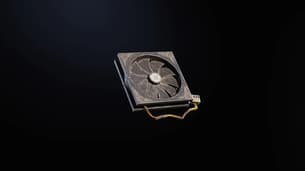 Where to Find Cooling Fans in ARC RaidersLearn where to locate Cooling Fans in ARC Raiders and how to use them effectively to progress through your Expedition and upgrade your gear.
Where to Find Cooling Fans in ARC RaidersLearn where to locate Cooling Fans in ARC Raiders and how to use them effectively to progress through your Expedition and upgrade your gear. ARC Raiders Queen Boss GuideDefeat the Queen in ARC Raiders! Discover her location, top weapons, and key strategies to conquer this deadly boss and earn rare loot.
ARC Raiders Queen Boss GuideDefeat the Queen in ARC Raiders! Discover her location, top weapons, and key strategies to conquer this deadly boss and earn rare loot. Roblox Grow A Garden Mega Safari Harvest Event GuideDiscover everything about the Roblox Grow a Garden Mega Safari Harvest event - new plants, pets and rewards.
Roblox Grow A Garden Mega Safari Harvest Event GuideDiscover everything about the Roblox Grow a Garden Mega Safari Harvest event - new plants, pets and rewards. VALORANT Harbor Rework Overview — Patch 11.10 ChangesRiot Games reworks Harbor in patch 11.10, adding new skills and a more dynamic playstyle while nerfing Clove to balance the controller meta.
VALORANT Harbor Rework Overview — Patch 11.10 ChangesRiot Games reworks Harbor in patch 11.10, adding new skills and a more dynamic playstyle while nerfing Clove to balance the controller meta.

